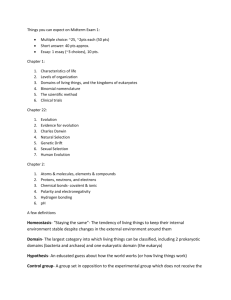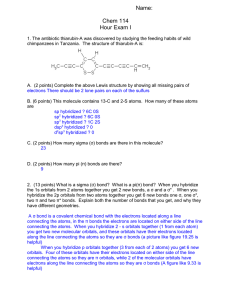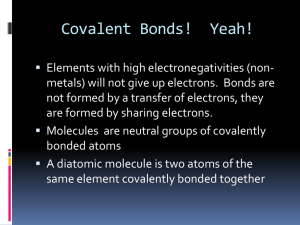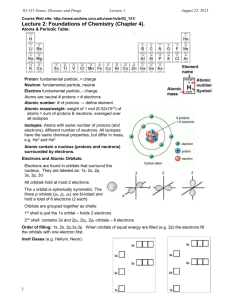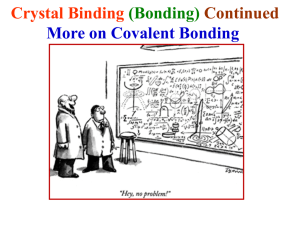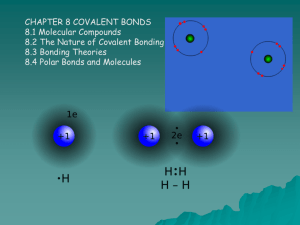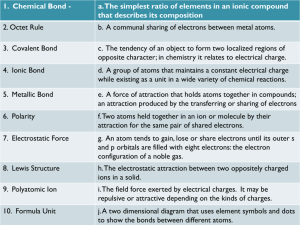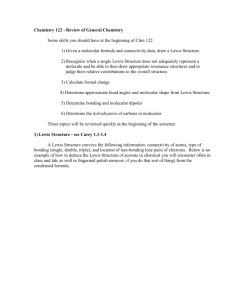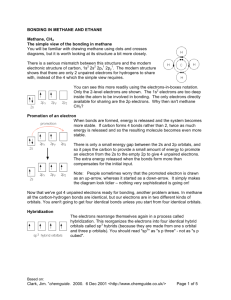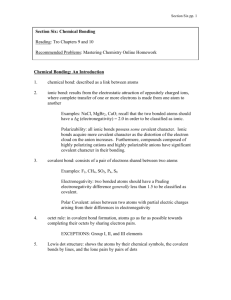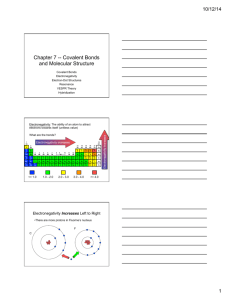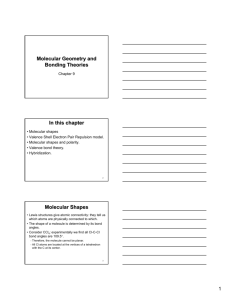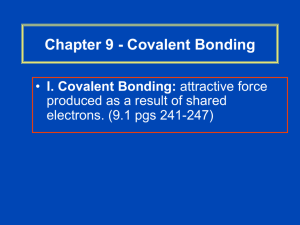Chemistry Chapter 15 – Covalent Bonds
advertisement
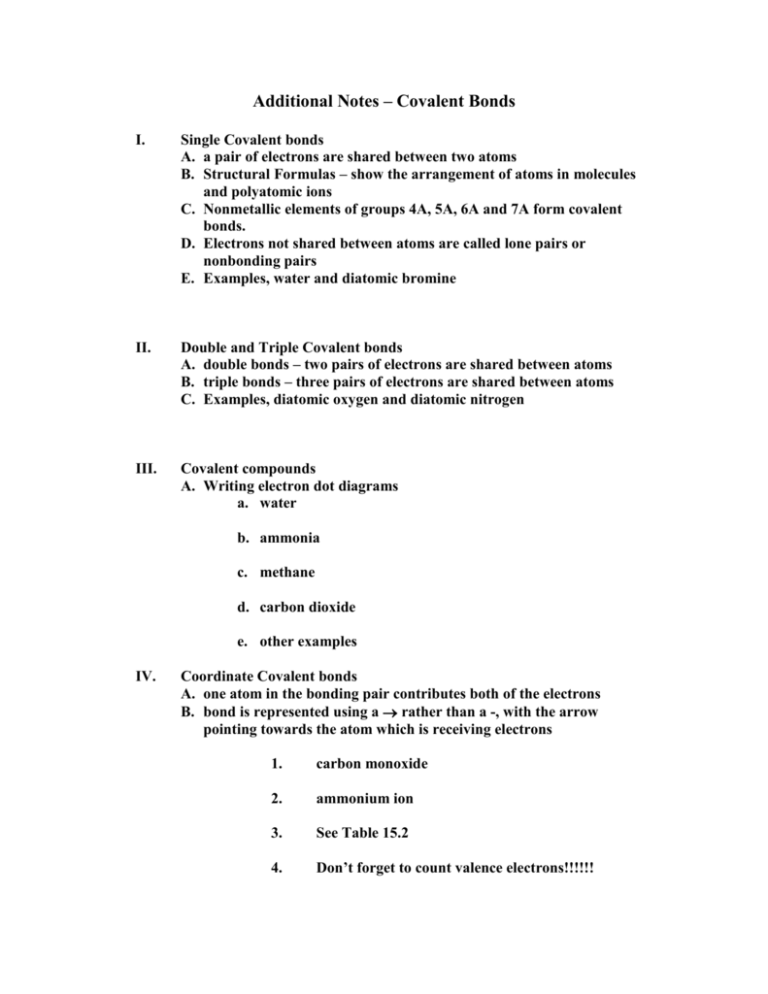
Additional Notes – Covalent Bonds I. Single Covalent bonds A. a pair of electrons are shared between two atoms B. Structural Formulas – show the arrangement of atoms in molecules and polyatomic ions C. Nonmetallic elements of groups 4A, 5A, 6A and 7A form covalent bonds. D. Electrons not shared between atoms are called lone pairs or nonbonding pairs E. Examples, water and diatomic bromine II. Double and Triple Covalent bonds A. double bonds – two pairs of electrons are shared between atoms B. triple bonds – three pairs of electrons are shared between atoms C. Examples, diatomic oxygen and diatomic nitrogen III. Covalent compounds A. Writing electron dot diagrams a. water b. ammonia c. methane d. carbon dioxide e. other examples IV. Coordinate Covalent bonds A. one atom in the bonding pair contributes both of the electrons B. bond is represented using a rather than a -, with the arrow pointing towards the atom which is receiving electrons 1. carbon monoxide 2. ammonium ion 3. See Table 15.2 4. Don’t forget to count valence electrons!!!!!! V. Resonance A. Some molecules have more than one valid electron dot diagram. B. Ozone is an example of a molecule that has a resonant structure. C. The bonds in ozone are all the same. The actual bond is a hybrid of the two resonant structures. VI. Exceptions to the Octet Rule Don’t worry about paramagnetic substances A. Nitrogen dioxide 1. number of valence electrons = 2. some atoms will not achieve an octet B. phosphorus pentachloride C. sulfur hexafluoride VII. Molecular Orbitals A. When two atoms combine to form a molecule, their atomic orbitals will overlap to form molecular orbitals 1. sigma bond – when two atomic orbitals combine to form a molecular orbital along the axis between the nuclei of the two atoms 2. Examples of sigma bonds s-s, p-p, s-p 3. pi bond – when two p atomic orbitals that are perpendicular to the axis between the nuclei of the two atoms combine to form a molecular orbital that is above and below the axis between the two nuclei 4. Drawings of different molecular orbitals







